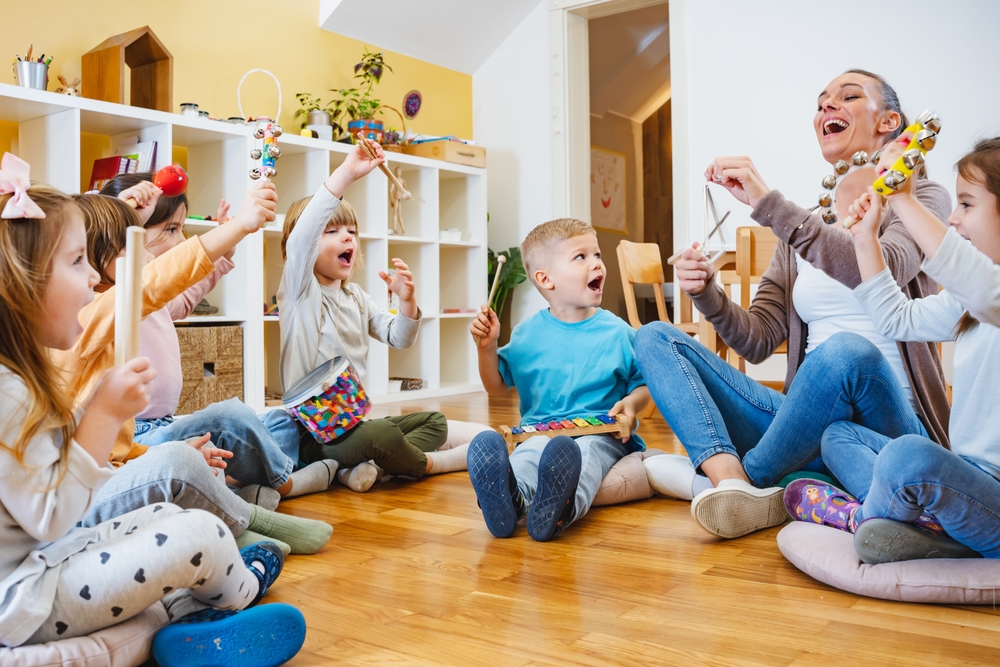Early childhood education is a crucial time for brain development, and the way young children learn can significantly impact their future academic success. One of the most effective ways to enhance learning in preschoolers is through multisensory learning—an approach that engages multiple senses simultaneously. By incorporating sight, sound, touch, movement, and even taste and smell, this method helps children absorb information more effectively while making learning a fun and engaging experience.
Research has consistently shown that multisensory learning supports cognitive development, memory retention, and fine motor skills, making it an essential strategy for early childhood educators and parents alike. Let’s explore why this approach works and how it benefits preschool-aged children.
What is Multisensory Learning?
Multisensory learning is a teaching method that involves engaging more than one sense at a time to help children process and retain new information. Instead of relying solely on listening to a teacher or looking at a worksheet, multisensory learning allows children to experience concepts in a hands-on and interactive way.
For example, a preschooler learning the alphabet might:
- See the letter on a flashcard
- Hear the sound the letter makes from a teacher or song
- Trace the letter in sand or with a finger on a textured surface
- Move their body to form the shape of the letter
- Say the letter name and its corresponding sound out loud
By combining these different sensory inputs, children strengthen neural connections in the brain, making it easier for them to understand and remember what they learn.
Cognitive Development
Research shows that early childhood is a time of rapid brain development, and engaging multiple senses during learning can help strengthen cognitive function. Multisensory experiences create stronger and more long-lasting memory associations compared to learning that relies on only one sense.
For young learners, these activities encourage active engagement and problem-solving, helping them develop key cognitive skills such as:
- Pattern recognition (identifying letters, numbers, and sequences)
- Critical thinking (solving puzzles, making connections between concepts)
- Language processing (linking sounds to letters and words)
By making learning more interactive and immersive, multisensory experiences help children build the cognitive skills they need for future academic success.
Memory Retention
One of the biggest benefits of this method is its ability to improve memory retention. When children engage more than one sense while learning, they create multiple pathways in the brain to access and recall information.
A study from the National Institutes of Health (NIH) found that children who were exposed to multisensory learning methods had significantly better recall and comprehension than those who learned through traditional, single-sensory methods (PMC, 2023).
For example, a preschooler learning about shapes will better remember the concept if they:
- Look at pictures of different shapes (visual learning)
- Feel the shapes using cutouts or blocks (tactile learning)
- Sing songs about shapes (auditory learning)
- Move their body to mimic the shapes (kinesthetic learning)
Because the information is stored in multiple parts of the brain, it becomes easier for children to retrieve and apply what they’ve learned in different situations.
Fine Motor Skills
Another critical area of early childhood development is fine motor skill development—the ability to use small muscle movements in the hands and fingers. Multisensory activities, particularly those involving tactile and kinesthetic learning, can help children refine these essential skills.
For example, activities like:
- Finger painting strengthens hand muscles and coordination
- Tracing letters in sand improves control and dexterity
- Using tweezers to pick up small objects helps refine pincer grasp
- Building with blocks enhances hand-eye coordination
Multisensory Learning in Action
At I’m Just a Kid, we believe that learning should be an immersive and joyful experience. That’s why we incorporate multisensory learning techniques into our curriculum to help children develop key cognitive, motor, and social-emotional skills.
Multisensory learning is one of the most effective ways to support early childhood development. By engaging sight, sound, touch, and movement, children create stronger connections in their brain, improving cognitive skills, memory retention, and fine motor development.
At I’m Just a Kid, we are committed to providing a fun, interactive, and research-based learning environment that nurtures every child’s natural curiosity. Visit us at I’m Just a Kid to learn more about how we incorporate multisensory learning into our programs and how it can benefit your child’s growth and development!
